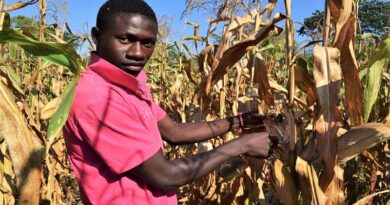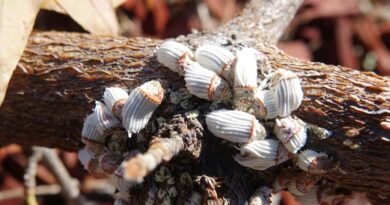Developing a dynamic approach using earth observation technology to improve pest risk modelling
14 December 2023, Africa: CABI is utilizing its expertise in crop health, invasive species, pest and disease modelling and digital development as part of a project using state-of-the-art Earth Observation (EO) technology.
Advances in EO technology, also known as satellite remote sensing technology, have opened new possibilities for modelling to improve the quality of datasets used to monitor the spread of crop pests exacerbated by climate change.
With funding from the UKRI Science and Technology Facilities Council and in partnership with Assimila Ltd and Cervantes Agritech, CABI is using EO data to improve the data layers used in the model that predicts where pests can establish.
This includes looking at irrigation, areas under protected agriculture and climate canopy conditions – demonstrating the improvements made to species distribution estimations for key pests and biological control agents.
Movement of crop pests
Rising temperatures have led to pests, diseases and weeds establishing in areas of the world that were previously uninhabitable while the growth in global trade and new trade pathways have increased the accidental movement of invasive species.
Up to 40% of the world’s food supply is already lost to pests such as the fall armyworm (Spodoptera frugiperda) which, according to a CABI-led study published in the journal CABI Agriculture and Bioscience, causes losses worth around USD $9.4 billion a year in Africa.
Furthermore, according to the International Livestock Research Institute, many crops foundational to African diets, such as wheat, maize, sorghum and millet, will struggle to survive rising temperatures brought about by climate change let alone the impact of invasive species themselves.
Minimise loss of yields
Recognising this, a CABI-led review last year, published in the Journal of Economic Entomology, stated that climatic models suggest that the fall armyworm may establish itself in southern parts of Europe including Spain, Italy, Portugal or Greece.
The researchers suggest a forecasting system – at a regional and local level – should be established to alert growers of the likely seasonal arrival of the pest so that action can be taken to minimize loss of yields.
Non-climatic habitat factors can also have a significant effect on species ranges, allowing them to persist beyond their natural ranges.
Irrigation and protected agricultural structures, such as glasshouses, are used specifically to allow crop species to be grown successfully in locations where the climate is otherwise inhospitable.
The same conditions that allow the crops to be grown in hostile climates allow pest species to persist beyond their natural limits. However, data on when and where these practices take place are sparse and outdated.
Climate-smart pest management approach
There is a need, therefore, to adopt a climate-smart pest management approach that uses timely sources of information, such as EO data as well as long-term climatic records.
Our assessment of pest distributions and risk must not only consider natural environmental conditions, but also the interventions humans are using to grow crops which can provide warmer (glasshouses) and wetter (irrigation) environments for pests survive.
The datasets will be made available to scientists to improve models and ensure decision makers are better informed to perform pest surveillance, detection, management, and provide advice to farmers.
Pascale Bodevin, Project Manager of the EO4AgroClimate project, said, “This project aims to develop a more dynamic approach to detect actively used irrigation systems using data derived from EO sources and test improvements against existing pest models.
“It will also model the effect that changing climates may have on the efficacy of biological control agents using data derived from EO sources.”
This project is using EO-derived data to enhance three critical modelling datasets: irrigation, protected agriculture structures and canopy temperature.
Timely information for pest risk assessment
The datasets produced will help to contextualize species occurrence records collected in the field and identify errors which are prevalent in large biological data repositories. The outputs will also improve the performance of environmental niche models leading to more accurate, high-resolution, and timely information for pest risk assessment.
Ms Bodevin added, “Datasets will be validated through CABI regional centres in conjunction with local agricultural research organizations in Pakistan, Kenya, South America, and China.
“The irrigation and canopy temperature datasets will be used to model biopesticide suitability. The layers produced will be used to test differences in model performance for biosecurity pests of concern for the UK and Australia.”
The data layers produced will be made available through the BioSuccess App to help growers guide their biopesticide applications. Meanwhile, the irrigation and PA datasets will be published through the CliMond website and integrated into CLIMEX, the industry-standard software.
Also Read: High Sugar Prices Create Signs of Substitution Among US Manufacturers
(For Latest Agriculture News & Updates, follow Krishak Jagat on Google News)















